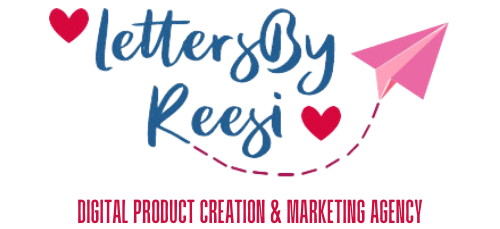If you’ve ever taken a traditional class or joined a professional training program, you’re probably familiar with the sense of community that develops among classmates. Cohort-based learning bring this collaborative spirit of adult cohort learning, making education more interactive and engaging. Whether you’re looking to create an online course for free or deliver professional e-learning training, cohort-based courses are a fantastic way to foster meaningful connections and drive better outcomes. Take advantage of our course creation services where we will guide you on how to set up an online course business.
In this post, we’ll explore what makes cohort-based courses so effective, how they differ from other formats, and how you can create your own to deliver a standout learning experience.
What Is Cohort-Based Learning?
Cohort courses involve a group of learners progressing through a program together. Unlike self-paced learning, these courses emphasize collaboration, interaction, and peer support. The idea is simple: learning with others fosters accountability and engagement, which leads to better retention and practical application.
What Is Meant by Cohort Study in Education?
In education, a cohort study refers to a group of students who start and finish a course together. This approach mimics the collaborative dynamics of traditional classrooms, even in virtual learning environments.
Advantages of e-Learning
- Increased Accountability: Learners feel motivated to keep up with the group and complete assignments on time.
- Peer Support: Participants can exchange ideas, solve problems, and learn from one another.
- Deeper Engagement: Structured schedules and group interactions help learners stay focused and involved.
- Networking Opportunities: Cohort classes create opportunities to build professional relationships and collaborate on real-world projects.
How to Create a Cohort-Based Course

Designing an impactful cohort-based course doesn’t have to be overwhelming. Follow these steps to get started:
1. Define Your Learning Objectives
What skills or knowledge should learners take away? Clearly define your goals before building your course. For example, if you’re offering software online training, focus on practical skills learners can apply immediately. You can also take advantage of our course creation services.
2. Choose the Right Platform
Pick one of the best online training platform that supports cohort-based learning. Popular options include:
- Teachable: Easy to use and great for creating structured courses.
- Thinkific: Offers tools for collaboration and engagement.
- Kajabi: An all-in-one platform for course creation and marketing.
3. Structure Your Content
Break your content into manageable modules. Each section should include:
- Live Sessions: Encourage real-time interaction and discussions.
- Pre-Recorded Videos: Provide foundational knowledge learners can review at their own pace.
- Assignments: Foster hands-on practice and group collaboration.
4. Foster Interaction
Interactive elements are key to a successful cohort-based course. Consider:
- Discussion Forums: Encourage participants to share insights and ask questions.
- Group Projects: Assign tasks that require collaboration.
- Weekly Check-Ins: Host live Q&A sessions or progress reviews.
5. Incorporate Feedback Mechanisms
Gathering feedback ensures continuous improvement. Use surveys, polls, and direct conversations to understand what’s working and what isn’t.
The Benefits of Online Learning in Cohort-Based Models

Cohort-based courses combine the benefits of online learning with the collaborative aspects of traditional classrooms. Here’s how:
1. Flexibility with Structure
While self-paced courses offer flexibility, cohort-based learning adds the structure many learners need to stay motivated.
2. Enhanced Engagement
Interactive tools and live sessions keep learners active and invested in the material.
3. Cost-Effectiveness
You can create online courses for free using tools like Google Classroom or Canvas. Even premium platforms offer cost-effective solutions compared to in-person classes.
4. Global Reach
Virtual learning allows you to connect learners from around the world, fostering diverse perspectives and enriching discussions.
Practical Examples of Cohort-Based Learning

Let’s look at some successful implementations:
- E-Learning Training Programs: Many companies use cohort-based models for onboarding and professional development, emphasizing peer collaboration and hands-on projects.
- Bootcamps: Coding bootcamps like General Assembly use cohort structures to teach technical skills intensively.
- Mastermind Groups: Business and personal development courses often adopt cohort-based models to create supportive communities.
FAQs About Cohort-Based Courses
What is the difference between self-paced and cohort-based courses?
Self-paced courses let learners progress on their own schedule, while cohort-based courses follow a structured timeline with a group of peers.
Can I create a cohort course for free?
Yes! Platforms like Google Classroom and free downloadable courses from Open Educational Resources can help you start without a big budget.
How do cohort-based courses improve engagement?
By encouraging interaction through live sessions, group projects, and peer support, these courses create an active and collaborative learning environment.
What tools are best for delivering cohort-based learning?
Popular platforms like Teachable, Thinkific, and Kajabi are excellent for creating and managing cohort-based courses. They provide features for live sessions, progress tracking, and community building.
Are cohort-based learning suitable for all topics?
Absolutely! From technical skills like software training to soft skills like leadership development, cohort-based courses work across various subjects.
Finally,
Cohort-based courses offer a unique blend of collaboration, structure, and engagement, making them a powerful option for educators and trainers. Whether you’re a business professional, an educator, or an entrepreneur, this model can help you deliver meaningful learning experiences that stand out.
Ready to create your own cohort-based course? Leverage top online learning platforms and start building a collaborative learning community today. Schedule a consultation and we will help you design a course that drives results and fosters lasting connections!








